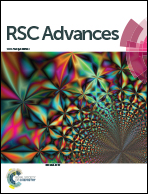Nanotubes with anatase nanoparticulate walls obtained from NH4TiOF3 nanotubes prepared by anodizing Ti
Abstract
In this work, titanium dioxide nanoparticulate nanotubes (NP-NT) in anatase phase from ammonium oxyfluorotitanate nanotubes (NT NH4TiOF3) are shown. The NT were formed from anodized titanium (Ti) in an organic medium. These nanostructures had an internal diameter of 90–120 nm and a nanotube wall thickness of 15–20 nm obtained by anodizing Ti, which resulted in a crystallographic order presented by the NH4TiOF3. After obtaining the NT, they were immersed in deionized water. Then, by using X-ray diffraction, it was possible to establish that the NT evolved from the NH4TiOF3 phase to the anatase phase. Furthermore, by transmission electron microscopy (TEM), it was observed that the nanotubes had an alteration in their morphology that showed their nanoparticulate walls. Also, by this technique, it was also possible to determine the interplanar distances and identify the crystallographic orientation (101). Spectral analysis of photoelectrons emitted by X-ray (XPS) was used to identify the chemical composition and possible mixture of Ti oxidation states. This method also verified the presence of Ti in anatase phase. IR spectroscopy allowed the presence of OH ions to be observed on the surface. During the development of NP-NT in anatase phase during this investigation, no heat treatment was applied.


 Please wait while we load your content...
Please wait while we load your content...